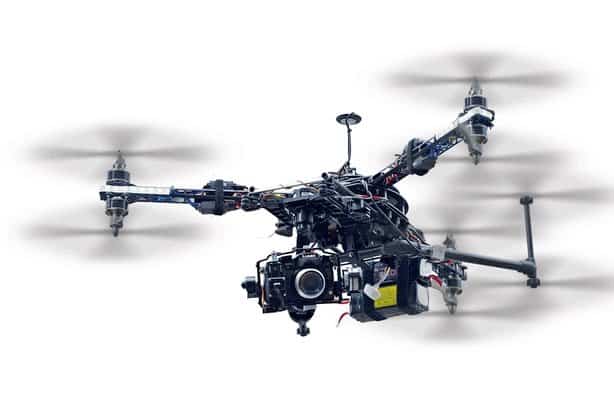At the 2018 winter Olympics opening ceremony, Intel set a Guinness World Record when it flew 1,218 shooting star drones for an amazing synchronized light show. They also held a smaller display at the closing ceremony.
Synchronized drone light shows have become kind of a thing for Intel. They did similar shows at CES 2018, to celebrate Wonder Woman, at the 2017 Super Bowl halftime show and at Coachella.
Several other companies and research groups are also developing synchronized drone technology. Here’s an interesting one from the University of Southern California.
Behind The Scenes – How Synchronized Drones Fly

No matter how good of a drone pilot you are or how much UAV training you have, you are not going to fly a few let alone hundreds of drones simultaneously.
To create dazzling light shows like Intel’s, it takes a lot of planning, coordination and programming skills.
Because no one can fly all the drones at one and neither will they get 500 drone pilots each with a controller, they have to create a central control system.
That system is a master computer that controls the drones and monitors each one of them throughout the show.
“We have this master computer that is the pilot. And that manages the whole fleet as we call it,” says Anil Nanduri, a Vice President at Intel.
But the real magic comes from humans sitting at a computer. Before even a single drone can leave the ground, they have to program each one of them to behave precisely in a certain way.
This includes programming their speed, direction, LED light color, height above ground and interaction with other drones.
They simulate the show on a computer before turning it into a perfect synchronized choreography involving hundreds of drones in the sky.
This may sound fairly straightforward by there are a myriad challenges technicians have to overcome to put on a successful show.
At the 2018 winter Olympics for instance, they had to account for the freezing cold and winds.
They also have to create fall back plans in case something goes wrong such as a drone losing power or connection.
Once experts turn all this into code, a master computer can then control the light show with relative ease.
For local light shows performed live, companies have to get special permission from the FAA to fly the drones over people and have a single drone pilot controlling multiple drones.
Beyond Entertainment

Entertaining drone light shows may be the biggest thing about synchronized drones right now but they are not the most consequential.
Tech companies and research organizations are considering how helpful ‘drone flocks’ can be in various situations.
Consider search and rescue. It is now commonplace for search teams to deploy drones. Often however, they’ll have only 1 or 2 drones to aid them.
A dozen or more drones working together can cover a much larger area quickly, often making the difference between life and death.
Drone flocks can also be immensely helpful in situations where large areas need to be monitored such as a wildfire, along a country’s borders, traffic control and so on.
Even the military is looking into using swarms of drones for surveillance and other defense activities.
A lot of these efforts are still within controlled environments. So there is still a lot of refining to do before these swarms can be used outdoors. The FAA also has to green light such drone uses.
It’ll still be a while before the future of drone swarms is a reality. But at the rate drone technology is developing, it could be sooner than we anticipate.
Meanwhile one researcher says they hope to develop a single controller. It would allow one to quickly launch and control multiple drones without doing any complex computing.

